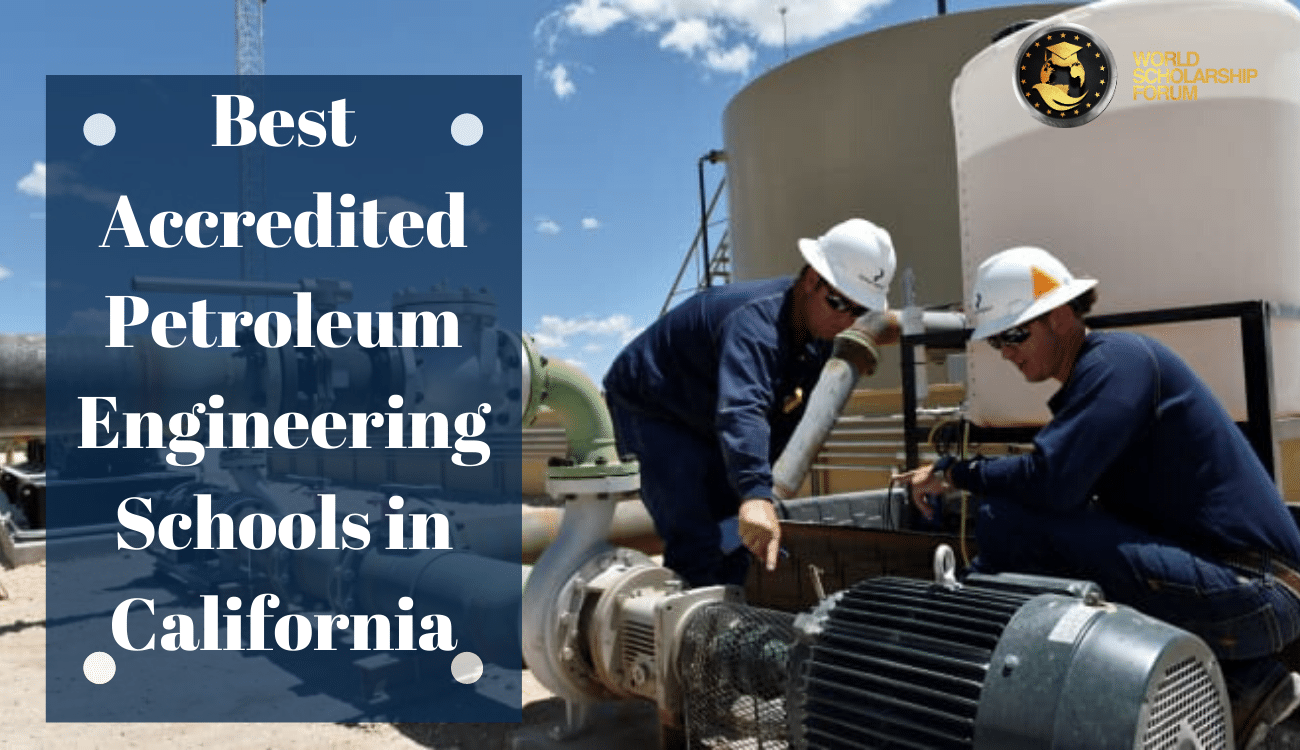Is welding a career you’d like to pursue, and are you wondering how much it would cost to attend welding school? To land your first job in this field, you will typically need a certain level of technical training and some work experience.
These requirements are utterly understandable because welding causes skills, safety, and concentration.
If you enjoy working with your hands and building things, welding could be your perfect career.
Welders contribute to constructing and repairing everything from minor automobiles to the largest ships.
However, to do so, you must complete a welding school program to learn the skills necessary to perform this trade.
Enrolling in a welding technical school to gain these skills may be a wise financial decision in the long run.
The question then becomes, how much does welding school cost? Below is a detailed discussion of everything that is required and the prices charged by various institutions.
Table of contents
- How to Choose a Welding School
- What will you learn from your Welding School Programs?
- Questions Before Deciding On A School
- 1. What Type Of Welding School Would You Like To Attend?
- 2. How Long Will It Take Before You Complete the Program?
- 3. What Types Of Classes Should The Welding School Offer?
- 4. Will You Be Fighting With Students Over The Use Of The Welding Schools Machines?
- 5. Which Welding Certificate Should You Attain?
- Critical Things To Keep In Mind When Choosing A Welding School
- The Cost of Welding Tools You Require for School
- The Cost of Welding Training Courses
- Are you considering applying for a welding scholarship?
- Frequently Asked Questions
- Conclusion
- References:
- Recommendations
How to Choose a Welding School
If you want to know how to choose a welding school without getting ripped off,
then this could be the most important message you have ever read.
The Cost of Welding School
The cost of tuition to become a certified welder will vary depending on which school you attend.
Tuition fees may also vary depending on various other factors, such as the type of training, the length of the program, and the state in which you live.
Some courses grant certification after completing a seven-month training program, whereas others may take four years.
Typically, welding school tuition fees begin at around $5,000 for courses that last between three and seven months.
College welding programs can cost you an average of $15,000 for courses that last up to 15 months.
A college program may provide more benefits than welding training, which is less expensive and shorter, depending on your preference.
What will you learn from your Welding School Programs?
Welding school is a mix of theory and practice. The exact mix depends on the program, but the following will give you a good idea of what’s ahead.
Learn to weld plates and pipes in multiple positions: Welding plates or pipes while they sit on a workbench is one thing.
But, if you want to get ahead as a welder, you also need to know how to weld pipes and plates together in the awkward positions that exist in real-world jobs.
Each position has separate qualifications, and an excellent school will teach you a broad range.
Learn all the major welding processes: You can be certified in many, but specific industries only use most.
Some courses teach these skills to help you progress in your career if you ever want to move into a more senior position.
Questions Before Deciding On A School
There are 5 CRITICAL questions to ask before deciding on a welding school so you come out making the most money possible in the fastest time possible.
1. What Type Of Welding School Would You Like To Attend?
First, you want to decide if you’ll get certified in pipe welding, plate welding, or combo welding. Getting a combo welding certificate means you can successfully weld on a plate and pipe.
It’s important to note that being 6G certified means you can weld in all of the welding positions, including:
- Uphill welding
- Downhill welding
- Horizontal welding
- Overhead welding
- Flat position welding
Make sure your welding school will give you training on all the major welding processes, including TIG (Gas Tungsten Arc Welding), MIG (Gas Metal Arc Welding), FCAW (Flux Core Arc Welding), and Stick (Shielded Metal Arc Welding).
2. How Long Will It Take Before You Complete the Program?
Welding schools go anywhere from 9 to 24 months (depending on whether you go for the associate’s degree).
They can take as little as 16 weeks to complete, as detailed by Vicki Bell of thefabricator.com.
3. What Types Of Classes Should The Welding School Offer?
Aside from learning the welding processes, and applying these skills in your structural welding classes, look for welding schools that also offer courses on metal cutting (oxy-fuel and plasma), Metallurgy, pipe fitting, blueprint reading (this one is a must because you’ll need to learn to weld symbols), and welding inspection.
4. Will You Be Fighting With Students Over The Use Of The Welding Schools Machines?
This is big. Ensure you ask if there is sufficient welding equipment and booths to accommodate everyone.
Some welding schools will pack their classes too full, trying to cram 2 or 3 students into one booth. When you talk to a school counselor or representative, asking this simple question will save you many headaches.
5. Which Welding Certificate Should You Attain?
Not all welding certificates are created equal. To make six figures welding, you must know which certificate employers will value the most. Make sure you ask your school about getting 6G certified.
This is a straightforward secret, but many welding students get this wrong. Knowing this truth will allow you to run circles around your peers and make more money than they do.
Here’s the secret…
When researching welding schools and certifications, it would be best to get certified in pipe welding. This is the one area that has been proven to pay six figures.
This is the key to quickly advancing your welding career while earning the most money possible.
If you walk away with a plate certification, you might work for $14 an hour in a shop. You will not make a lot of money this way.
Continue to use the 6G certificate.
The process takes longer because your skill level must be high enough, but you can graduate from a welding school with a 6G certificate in hand in as little as 12 to 18 months if you have the proper training.
Critical Things To Keep In Mind When Choosing A Welding School
Step 1:
When you start your school search, an excellent place to start is to find companies in your area and ask them which schools they like to hire employees from. This may give you a good idea of which school to attend.
With the shortage of welders, many of these companies will start you out at $50K+ and
offer you overtime. However, the demand is so great for good welders (especially pipe and TIG) that you might not have to fight too hard to get on.
Step 2:
Next, identify some trade schools in your area. Once you’ve found some, you’ll want to request some information. Finally, you’ll want to know these general questions.
- How long does welding school take?
- Where are your welding school locations?
- Do you have a welding school near me?
- What are your welding school prices?
- What are your welding school requirements?
Step 3:
Take a quick tour of the welding shop. You’ll want to see how much equipment they have and how many students attend. Don’t be afraid to talk to the students. Ask them if they like the school, what they don’t like, and if they already have job prospects lined up.
Additional Costs Associated with Welding Studies
When looking for a welding school, you must research any additional costs apart from the tuition fees. In addition, there are other costs you may incur, which may include hidden costs and associate fees.
The extra cost may include the following but is not limited to:
- Testing fee: Testing fees, such as certification, may be a requirement. The testing fee ranges from $300 to $550 for every test and may be charged independently from the main tuition fees.
- Application fees: The fee gets charged by nearly all schools, and you can expect to incur an average of $125 for an application.
- Housing and Food: If you live far from the school, you can expect to pay more for food and house rent. Depending on the program you enroll in and the school location, you may incur between $500 and $10,000. Housing on its own may cost you about $4,000 and above.
- Books and Welding Equipment: The upkeep cost may include welding equipment and books you need. The average book expenses can be $220, while safety and welding equipment may be between $500 and $1,500.
The Cost of Welding Tools You Require for School
You will purchase your tools for a successful training program and beyond as a certified welder. On average, your own set of tools will cost you about $400. This cost will also depend on the program you enroll in and the curriculum.
The Cost of Welding Training Courses
Trade education, or technical training, differs from white-collar education because it focuses on practical skills. The most significant distinction is that trade education does not require comprehensive and theoretical knowledge to succeed.
As opposed to this, technical education focuses on learning a specific set of skills and using them as soon as possible to earn a livelihood.
As a result, many welders choose diploma and certificate programs because they are less expensive and provide quicker completion times.
For this example, let’s look at Earlbeck Gases & Technologies, a leading welding school in the mid-Atlantic region, and see how much welding courses cost there. But, again, the cost here may not differ significantly from other institutions throughout the county.
Are you considering applying for a welding scholarship?
When deciding whether to attend welding school, find out if the school offers an associate scholarship program. Scholarship awards can range from $1,000 to $10,000, depending on the specific school and program.
Sometimes, scholarship awards may cover the entire program’s tuition fees—organizations such as the American Welding Society and Delta Technical College award scholarships yearly to deserving students.
The American Welding Society awards scholarships worth $1 million to deserving students yearly.
Frequently Asked Questions
Typically, welding school tuition fees are roughly $5,000 for 3–7 months of courses.
Yes, welding school can be worth it because a postsecondary welding education is increasingly becoming a requirement among employers, according to the U.S. Bureau of Labor Statistics (BLS).
The U.S. Bureau of Labor Statistics reports that the need for welders is expected to grow by 26 percent by 2020.
Welding is an excellent career, and welders commonly praise their profession and extol the many benefits they get from it.
If you are looking for a welding job with no experience, a perfect combination for beginners is technical school combined with further practice in a proper environment.
Conclusion
Remember that you must put in much time and effort to become an expert welder. Welding schools are also an excellent place to learn the skills needed to advance your career.
You must conduct preliminary research into the costs associated with your preferred welding course option. In summary, welding schools’ costs range from $300 to $100,000.
References:
- waterwelders.com/how-much-does-welding-school-cost/
- xpcourse.com/knight-school-of-welding-cost/
- keyword-suggest-tool.com/search/how+much+is+welding+school/
- weldguru.com/choosing-welding-school/
- waterwelders.com/blog/page/13/





